How to Repot a Cactus | Repotting a Cactus
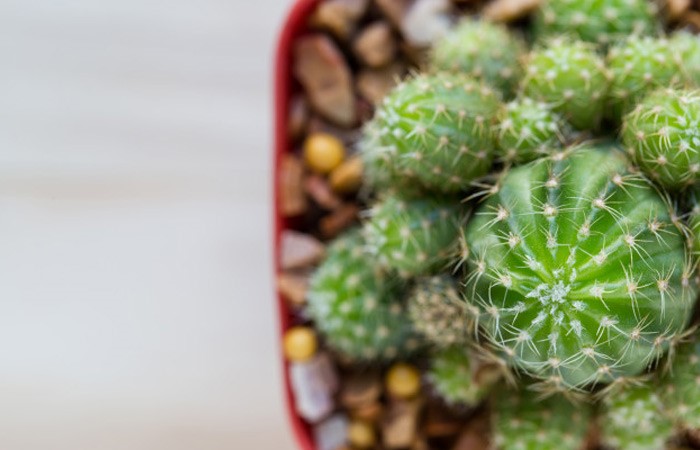
How to repot a cactus is a question that you need to answer inevitably. When your hardy plant is too large for its container. The prickly exterior is what makes repotting a cactus tricky, and you need to know how to repot a cactus without getting hurt. In this article, we are going to show you the steps for repotting a cactus, the tools you need, care tips for repotting cactus, etc. So if you want to know how to repot a cactus without hurting yourself, here’s is how:
Things That You Need for Repotting a Cactus Plant
We’ll tell you how to repot a cactus without getting hurt, but you need to prepare some tools for this process including pot, soil, pebbles, leather gloves, tissue paper sheets, and tape. Below, we’ll tell you how to find the right pot and soil for repotting a cactus.
The Right Pot for Repotting Cactus
If you want to know how to repot a cactus, you need to know how to find a suitable pot as well. Cactuses can grow in almost any container, but we suggest terracotta pots. The porous surface of these pots allows moisture to escape, preventing rot and mold and keeping the soil dry. You can find these pots in any hardware or gardening store.
For terracotta pots or any other, you need to make sure that the container has a good drainage system. Cacti prefer dry soil and their roots will rot if the dirt is too damp. In addition to root rot, damp soil can result in fungus growing in the pot alongside your cactus too.
If you’ve found a nontraditional pot that you really like, but it doesn’t have a drainage hole, make your own drainage system with pebbles. Before filling the container with cactus soil, use larger rocks at the bottom of the container, and then smaller pebbles.
Before following the steps of how to repot a cactus, you also need to determine the perfect size for the container. It is tempting to buy a large pot to give your plant plenty of space to grow, but the right container for repotting a cactus is only a little bit larger than the previous container. Don’t forget that cactus species enjoy a small and cozy pot.
The Right Cactus Soil
The perfect cactus soil is a nutrient-rich soil with moisture control and drainage. There are many brands that offer cactus compost specially designed for desert plants like cacti. All of them are good options as cactus soil and for repotting cactus. While helping your plant to grow well, the fast-draining formula of cactus compost also prevents root rot.
Cactus compost imitates the desert soil for your cactus, so it can grow under the best living conditions. Cactus soil usually consists of sand or grit, soil, and peat moss.
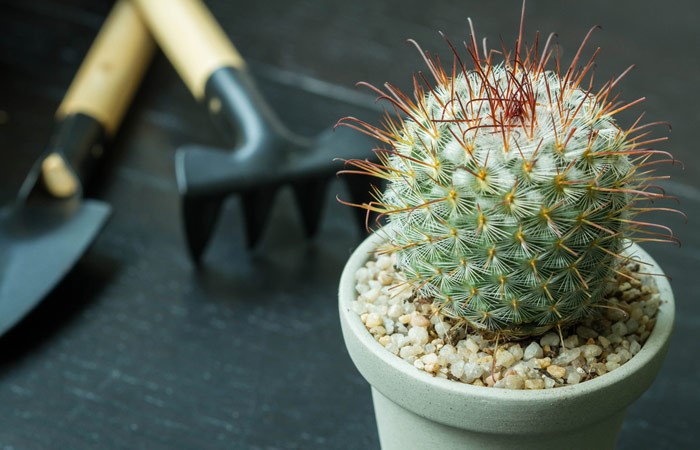
What Time of Year to Repot Cactus
Before asking how to repot a cactus, you should ask when to repot a cactus. When you buy your plant online or form a greenhouse, it is probably planted in a small plastic pot. Naturally, you prefer to transfer it in a pot that complements your décor better.
If the pot is too small, the way that the cactus is the same size as the opening of the container and you can’t water it easily, it is a good idea good to find the answer for how to repot a cactus. If the pot size seems right, you might still need to repot your cactus.
We don’t know what kind of cactus you have, but for most species, we recommend repotting the plant when its roots show through the container drainage holes. Or, when the cactus crown reaches the edge of the container. You will see this occur every 2 to 4 years. Even if your cactus hasn’t outgrown the pot after four years, we recommend repotting it to freshen up the soil.
Repot your cactus during the dry season, usually in late winter or early spring. Roots may break during the process, and moisture can cause those broken roots to rot.
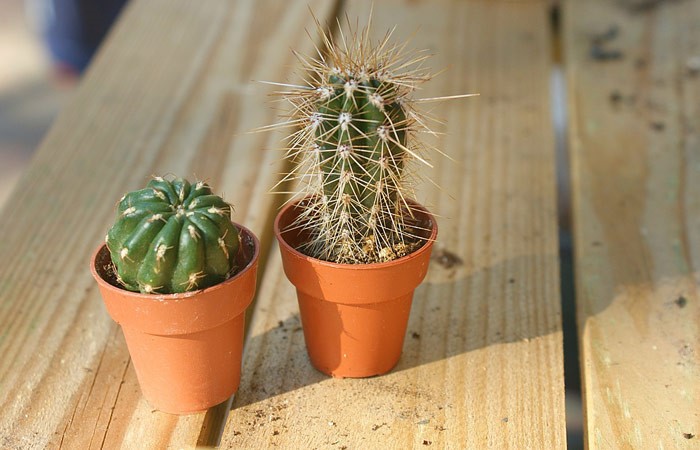
How to Repot a Cactus without Getting Hurt
As we mentioned, you need leather gloves to be able to repot a cactus without hurting yourself. Why not fabric gloves? Because cactus spines can easily penetrate it and hurt you. In addition, some cactuses have spines with hooked ends that grab the glove fabric and won’t let go.
Plastic coated fabric gloves are also okay for repotting a cactus, only if most of the fabric surface is covered and your cactus has soft needles. Now that you have the right gloves, follow these steps for repotting cactus:
How to Repot a Cactus: Wrapping
The first step in how to repot a tall cactus (or short ones) guide is to gently wrap your plant with tissue paper sheets. Start at the base of your plant and work your way up. If the spines are poking through the sheets, fold them to create more thickness. Wrapping may take some time, but it is a necessary step in how to repot a cactus without getting hurt.
Now tape each sheet to keep it secure. Be careful not to wrap it tightly so the spines don’t break. If you want to know how to repot a tall cactus or the one that has branches, use more sheets or wrap each of the arms individually. This tip can also help you when repotting candelabra-type Euphorbia succulents and their spines.
How to Repot a Cactus: Removing
When wrapping your cactus is done, place some pebbles over the pot’s drainage hole. This way, water can run out without moving the cactus soil. Next, put 1 or 2 inches of cactus soil into the container and gently press it down.
Put on the gloves. Gently but firmly, grasp the base cactus (above the root ball) and pull to remove the plant. Tilting the pot and tapping on it can help loosen the soil a bit.
When the cactus is out of the pot, shake some of the cactus compost away. Old cactus soil has not many nutrients left and you need to replace it. Before repotting the cactus, check the roots and make sure that they’re white and healthy (if not, scroll down to see how to repot a cactus with root rot).
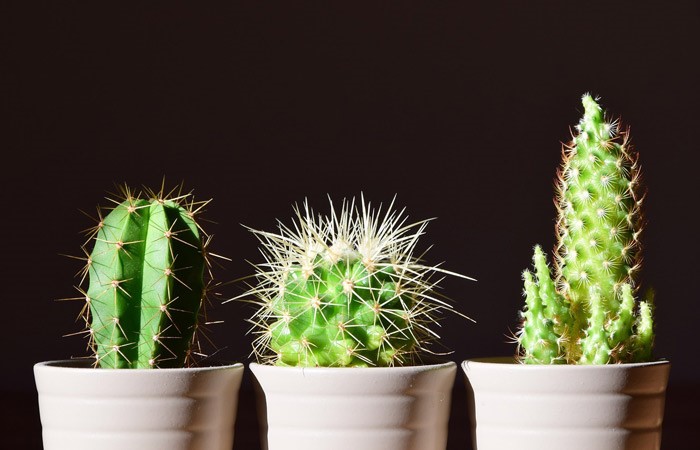
How to Repot a Cactus: Planting
Now, set your cactus into its new container. Remove the sheets and check the cactus height in the pot. Wrap the plant again if it’s necessary to remove it again to add or remove soil. For repotting a cactus successfully, you need to continue working with it until you get the cactus to the proper level inside the container. There should be an inch between the cactus soil surface and the pot lip.
Scoop the cactus soil down and around the plant to cover the root ball. While filling the container, gently tap the side of the pot occasionally to settle the soil around the roots. When the pot is filled, carefully remove any remaining sheets on the cactus.
For placing the cactus soil without getting too close to its spines, use a chopstick, knitting needle, or any instrument like them. Such an instrument can help you remove soil bits that might get caught in the spines.
Repotting a Cactus: Tips
- After doing the steps in how to repot a cactus without getting stuck and hurt, water your plant thoroughly until the water runs out the drainage hole.
- After emptying the excess water, place your cactus in a location with 6 or more hours of bright, indirect sunlight during the day.
- If you have a small plant and not searching for how to repot a tall cactus, you can skip the wrapping (but not the gloves). You can also move your small cactus with a kitchen tong, gently grasping it by the root ball.
- Wrapping is a great solution on both how to repot a cactus without getting hurt and moving it to a new place.
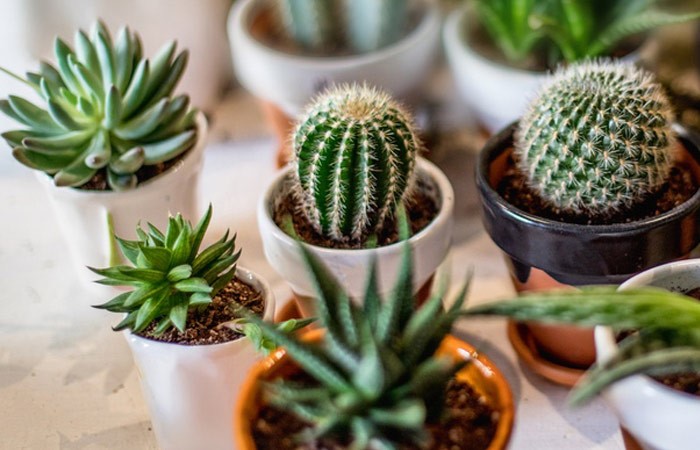
How to Repot a Cactus with Root Rot
After removing the cactus carefully, knock the dirt from the root ball as much as you can. Then brush away the remaining dirt to see the roots clearly.
Using bypass pruners, trim out any parts of the roots that are black, brown, smelly, or oozy. Next, dust the remaining roots with powdered sulfur thoroughly. Now set the plant aside with its roots exposed to the air for 1 to 7 days so any pruning cuts scab over. When done, disinfect your bypass with household disinfectant spray completely. When ready, follow the above steps.